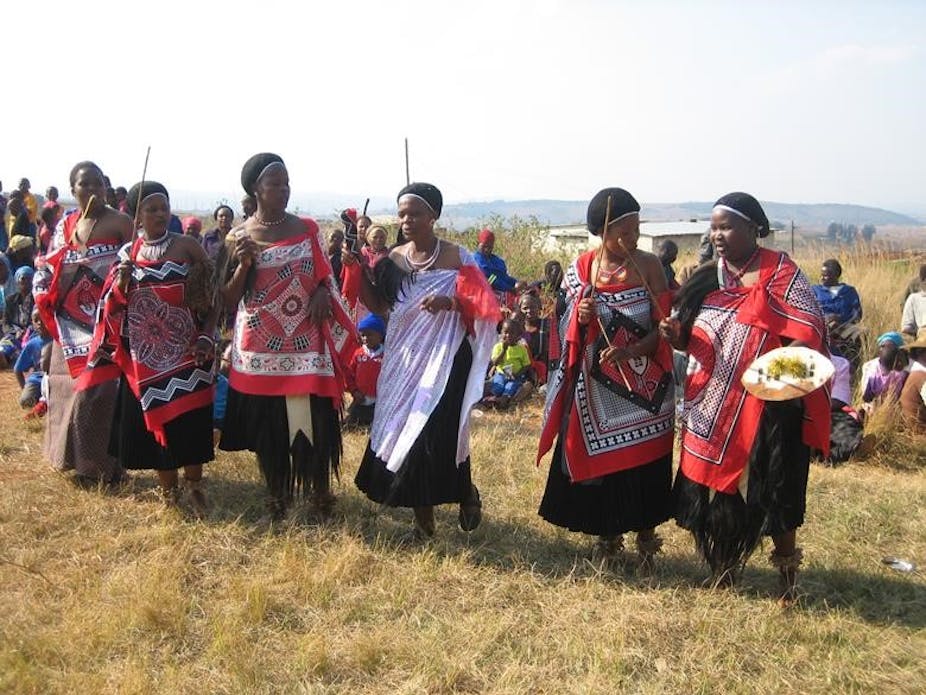Land degradation is a critical challenge for Africa. Combined with climate change and poverty, it reduces food security and risks the livelihoods of millions.
This much is well known. What’s more challenging is how to fix the problem. Research can play a major role in identifying solutions. But success in getting research findings to those who can use them depends on how the research is done, specifically whether people most affected by the issues being researched are involved, and how the outcomes are shared.
For research to begin to provide answers and to inform practice it needs to be relevant, legitimate and accessible to groups that can best use it. Whether this is achieved depends on the process through which knowledge is produced, and needs attention to be given to the social context in which new knowledge is shared.
Over the past few decades researchers have adopted more inclusive ways of working. Research on land degradation and its prevention has started to involve land users themselves more directly, often as sources of data and sometimes by involving them in data collection through longer-term monitoring programmes.
But the next step – of sharing the findings – is still often neglected. A great deal of research is extractive and takes from people, only to gather dust on shelves, failing to reach those who can use it to improve their lives.
We aimed to avoid this during a project in Swaziland by asking our research participants how they wanted us to share the findings, and by following their lead.
Research in the middleveld
Swaziland’s middleveld occupies about one-quarter of the country and has an average altitude of 2,000 to 2,500 feet. It is a hilly region with thin soils and is home to the majority of the Swazi population, many of whom depend on the land for their survival. But degradation in the form of soil erosion, weed infestations and declining soil fertility due to a lack of nutrients going back into the soil means the land quality is worsening. This results in reduced crop yields and poor quality grazing, and has knock-on effects for people’s food security and livelihoods.
Our research on sustainable land management in the region used a mixture of standard data collection methods like household questionnaires, focus groups and interviews. The aim was to find out:
how land users were identifying and responding to degradation; and
whether their responses were addressing the problems they faced.
Once the data analysis was completed, the question we faced was: how do we share the results in a way that will ensure that our findings are useful to the people who could really benefit from them?
The approach we took was to ask land users what the best approach would be for them.
Our expectation was that feedback would happen through a small workshop with traditional leaders in the study village, as is common in similar research projects. Key messages would then trickle down to the farmers.
Instead the land users made a novel suggestion: they proposed a celebration of the research at a party involving the whole community – approximately 1,500 people. Their aim was to create an event that was memorable for all involved.
Party time
The celebration turned into a major event. Preparations started about three months beforehand. Villagers provided a shopping list which included two cows, 20 chickens, 70kg of rice and five cabbages, as well as 5kg of tomatoes and green peppers, two litres of oil, 1kg of salt, various spices, 6kg of mayonnaise and enough cordial to make 480 litres of juice. Local households donated 50kg of maize. Villagers also devised a draft programme for the day.
Catering and decoration committees were established by the villagers and schoolchildren rehearsed songs and dances.
On the day of the party the women in the catering committee began preparations at 5.30am. When we arrived in the village a bit later, the decorations committee had made excellent progress. Drapes were hung and tablecloths were set out. We added to these, putting up posters with the main messages from our research, in both English and Siswati, for people to look at while they were queuing for their food.
Once the villagers were all present and everything was ready, the formal programme began. An official MC with a loudhailer explained the purpose of the party was to share the information that we had learnt from the people when they were answering our questions. The pastor then gave a prayer, and we summarised our research findings, with translation into Siswati, talking everyone through the posters.
We had distilled the research findings into simple messages highlighting good and bad land management practices and appropriate responses to the types of degradation within the village.

Next was the dancing: first, the girls, who wore traditional dress but sang a new song about people from the UK who came to the village to discuss agriculture and development. The boys had their turn, then the men and the women.
Successful celebration
The celebration was a huge success. It offered people the opportunity to buy into the research and to have more of a sense of ownership than is usually the case.
Sharing the research findings in an event that was designed by the land users themselves presented a memorable talking point for people as part of an enjoyable day that brought the community together. Overall, our approach created a suitable social and cultural context in which people could evaluate the relevance, legitimacy and accessibility of the results generated by the research.
It’s not just researchers working on land degradation who could more proactively involve their stakeholders in designing dissemination activities. Our approach could be applied to better engage research users in a range of different areas and disciplines – from health to sanitation and microfinance.

